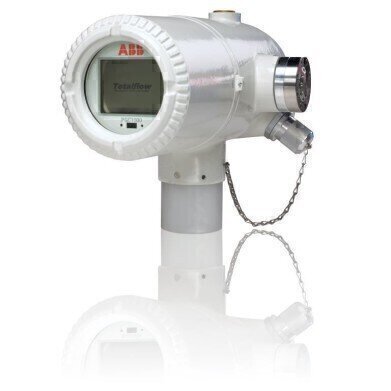Measurement and Testing
New Field-Mounted Gas Chromatograph Offers Expanded Choice for Chemical, Oil and Gas Applications
Apr 04 2013
ABB (Switzerland) has expanded its process analyser offering for chemical, oil and gas applications with the introduction of the new PGC1000 field-mounted process gas chromatograph. Suitable for measurement of hydrocarbon groups C1 to C9+, inerts and hydrogen sulphide, the PGC1000 provides a compact measurement solution for a wide variety of gas processing applications.
Measuring just 16 inches front to back and weighing 28 pounds, the PGC1000 offers a highly compact footprint, opening up new installation possibilities. The single module contains all of the necessary switching valves, columns and detectors, with no metal moving parts. As a field-mounted device, it can be installed outside near to the sampling point and can be used in temperatures from -18°C up to 55°C, or -40 to 55 where a cold weather enclosure is used. The device can be fitted either directly onto two or 12 inch pipelines or onto a pole if required.
The PGC1000 provides a choice of sampling options. Up to four different gas streams can be sampled at a time. Users have the option of a single auto calibration stream and three sample streams or two auto calibration streams and two sample streams. A standard sample conditioning module is also supplied to handle gas streams that need additional filtering or where sample transport lag times need to be minimised.
A key feature of the PGC1000 is its ease of use, enabling it to be used by operators with little or no experience of using process gas chromatographs. Programming and operation is achieved via a graphical user interface software package on a laptop or workstation PC. Combining a Windows-based interface with a program specially written for the PGC1000, the software provides a simple yet powerful tool for operations, diagnostics and data handling.
The PGC1000 retains historical data which can be subsequently used for audit trails, maintenance and troubleshooting, including verifying transmitter operation. Via the operator interface, users can configure the period for which data needs to be retained. The default memory configuration enables the details of up to 480 analysis cycles to be stored, including parameters such as temperature and pressure, noise values and alarms. This data can be collected either via a remote communication link or via the laptop or workstation interface.
Basic data can also be accessed via the PGC1000’s ¼-inch VGA display screen. Via this display, the user can perform many of the operator functions without the use of a laptop or PC. Magnetic interface technology enables the user to handle basic programming tasks through the PGC1000’s explosion-proof glass, eliminating the need to open up the device and compromise its safety protection.
Maintenance is also simplified. Both the PGC1000’s hardware and software feature easily replaceable electromechanical modules, making the unit simple to repair or upgrade. Diagnostic software and wizards also make it easy to trace any faults.
The PGC1000 is fully certified to leading safety standards, making it suitable for use in a range of potentially explosive and hazardous areas. As well as measuring hydrocarbon gases, the device is also ideal for monitoring fuel gases such as natural gas, synthetic gas, methane, and / or bio-gas.
Digital Edition
PIN 25.1 Feb/March
March 2024
In This Edition Safety - The technology behind the ION Science Tiger XT - Safety with ammonia and LOHCs as hydrogen carriers Analytical Instrumentation - Discussion on new tribology te...
View all digital editions
Events
Apr 28 2024 Montreal, Quebec, Canada
Apr 30 2024 Birmingham, UK
May 03 2024 Seoul, South Korea
May 05 2024 Seville, Spain
May 06 2024 Riyadh, Saudi Arabia


















